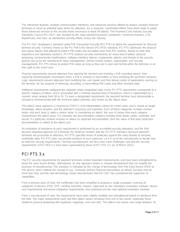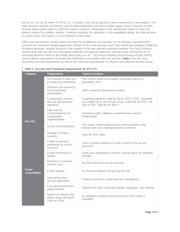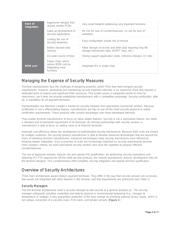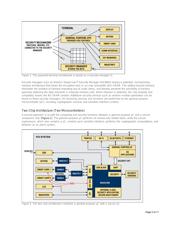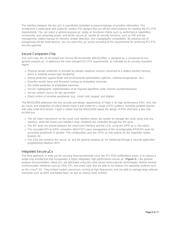herunterladen

Maxim > Design Support > Technical Documents > Application Notes > Microcontrollers > APP 4809
Keywords: pci pts 3.1, pci ped, maxq1850, security, two-chip, payment terminals, financial terminals, certification
APPLICATION NOTE 4809
Designing Next-Generation Payment Terminals That
Meet PCI PTS 3.x Requirements
May 19, 2011
Abstract:
Designing enhanced
yet secure payment terminals is discussed in this application note. We expose the
pitfalls that manufacturers face for PCI-PED PTS certification and explain how they can be addressed and solved by
the use of two-chip architecture, based on the DeepCover
®
Secure Microcontroller (MAXQ1850).
A similar version of this article appeared in the March-April 2011 issue of CardsNow! Asia Magazine.
Card-based transactions are soaring, with over 110 billion worldwide in 2009. This expansion has several causes.
Increasingly global payment schemes guarantee broad acceptance, and the available technologies and standardization
efforts are making transactions more reliable, convenient, and inexpensive for merchants. Perhaps the most important
factor, however, in the success of card-based transactions is the growing confidence of cardholders in the payment
system—from the initial purchase, to the debit, and beyond.
New Terminals, New Trends
Financial terminals have become the vehicle for delivering a range of new services from payment-products companies.
Terminals are no longer simple card-reading machines. They have become sophisticated computing devices capable
of performing transactions, managing inventories, and running business applications. This changing role is clearly
indicated by the new terminology used to describe terminals: formerly known as point-of-sale (POS) devices, they are
now called point-of-interaction (POI) systems. POI systems must now communicate faster and more easily (e.g., with
USB, Ethernet, Wi-Fi
®
, or Bluetooth
®
). They must support several concurrent applications and handle a plurality of
card types (payment cards, loyalty cards, etc.).
Also changed are the conditions of use. POIs must sometimes operate in moist environments, either outside or inside.
They are frequently portable and ergonomic, sporting visually appealing form factors that complement the merchant's
image. Widespread reuse of available technologies makes the terminals look and feel like the everyday devices with
which we are familiar, such as smartphones, notebooks, and gaming consoles. Modern POIs employ similar design
aesthetics, feature rich color displays, use sophisticated touch-screen interfaces, and offer connectivity features that
facilitate their integration into information systems. Full exploitation of these hardware technologies enables software
reuse as well, from off-the-shelf operating systems to software stacks that allow abstraction of hardware layers. In
general, software reuse speeds development, reduces validation risks, and provides faster time to market with lower
R&D costs.
Terminal Security
The main difference between POI terminals and consumer electronics (CE) devices is the need for high levels of
security. The global deployment of EMV* cards means global threats. Attacks can be executed quickly and globally if
appropriate countermeasures are not in place. Furthermore, the expenses incurred in making an attack (in terms of
tooling, time spent, etc.) can be higher because the return on investment is higher. For that reason, the largest threat
to security is now considered to be crime syndicates.
Page 1 of 11
Verzeichnis



